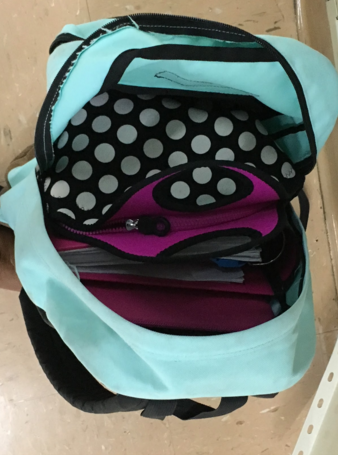A pain in the back: weighing in on the health risks of backpacks

In a survey conducted by The Lions Tale, more than half of students have experienced back pain as a result of wearing backpacks.
February 23, 2016
Backpacks have long served as a symbol of school life. In most people’s minds, they are a key part of what identifies a person as a student. Research, however, is showing that instead of simply being a practical tool with which students can carry their books and belongings, backpacks have been negatively affecting school-aged children’s lives.
The use of heavy backpacks is the leading cause of back pain in school-aged children. According to the U.S. Consumer Product Safety Commission, there are approximately 14,000 children treated for backpack-related injuries each year, including about 3,000 children who are treated in emergency rooms. Chiropractors and pediatricians all around the country are seeing cases of adolescent back pain, especially in those who carry backpacks regularly.
In most schools, the vast majority of students carry their backpacks from class to class. CESJDS provides large lockers, so there are less students who feel the need to carry their backpacks throughout the entire day. However, according to a survey of around 300 JDS students, over half consider their backpacks to be too heavy, and almost 60% find that their backpack noticeably hurts their back.
Despite this discomfort, there are certain students who still find carrying backpacks around school necessary. Junior RJ Firestone, one such student, said that “it’s just a really convenient way to carry my stuff.”
Carrying a backpack has been found to cause numerous health problems, including disc compression within the spine and tight muscles, which can affect day to day life.
“[Backpacks] could cause back pain, neck pain, it may encourage development in scoliosis,” chiropractor Crystal Surprenant said. “It can even go down to knee pain and ankle pain, because you have the whole connected chain that is affected.”
According to school nurse Margarita Payne, how a student wears his or her backpack can strongly affect the degree of damage that a backpack can inflict.
“The worst way to carry your backpack is over one shoulder because you’re putting all of the weight on one side, which can cause shoulder pain and back pain,” Payne said.
According to Dr. Surprenant, backpacks should also have wide, padded straps and the backpack should be adjusted so that it sits directly against one’s back and does not hang past the waist. It is also important that a backpack should not exceed 10 to 15 percent of a student’s body weight. Other doctors further recommend using a rolling backpack because it takes the stress off of the neck and back.
Freshman Noah Kramer has used a rolling backpack since he started going to school, and continues to use it due to problems with his neck and back which make using a regular backpack more difficult.
“You don’t have to carry it around wherever you go, you literally just roll it around,” Kramer said. “And, just in general, it takes the weight off of your back.”
Doctors agree that the increase in backpack-related injuries is a serious problem, and it should be addressed as soon as possible.
This problem with students carrying heavy backpacks is not an unrecognized one. In fact, California has legislation that limits the weight of textbooks. JDS took this issue into account in 2012, when deciding to implement the Bring Your Own Device policy.
“I think a discussion at the time was a desire to have more online textbooks, to try to eliminate textbooks wherever we could, and particularly being able to use online resources so that students wouldn’t have to take heavy textbooks home,” Director of Instructional Technology Ginger Thornton said.
While the technology department has taken reducing the weight of backpacks into consideration, many within the student body may not be aware of the problems of wearing backpacks.
Payne recommends that students talk to their pediatricians about whether or not they are using the right type of backpack. She says that it is important to realize that having a bigger backpack does not necessarily mean better or more balanced support. Instead, it allows students to carry more, making their backpacks even heavier.
“Try to carry less stuff,” Payne said. “The school provides everybody with a locker, so it’s really up to students to make use of that locker.”

















